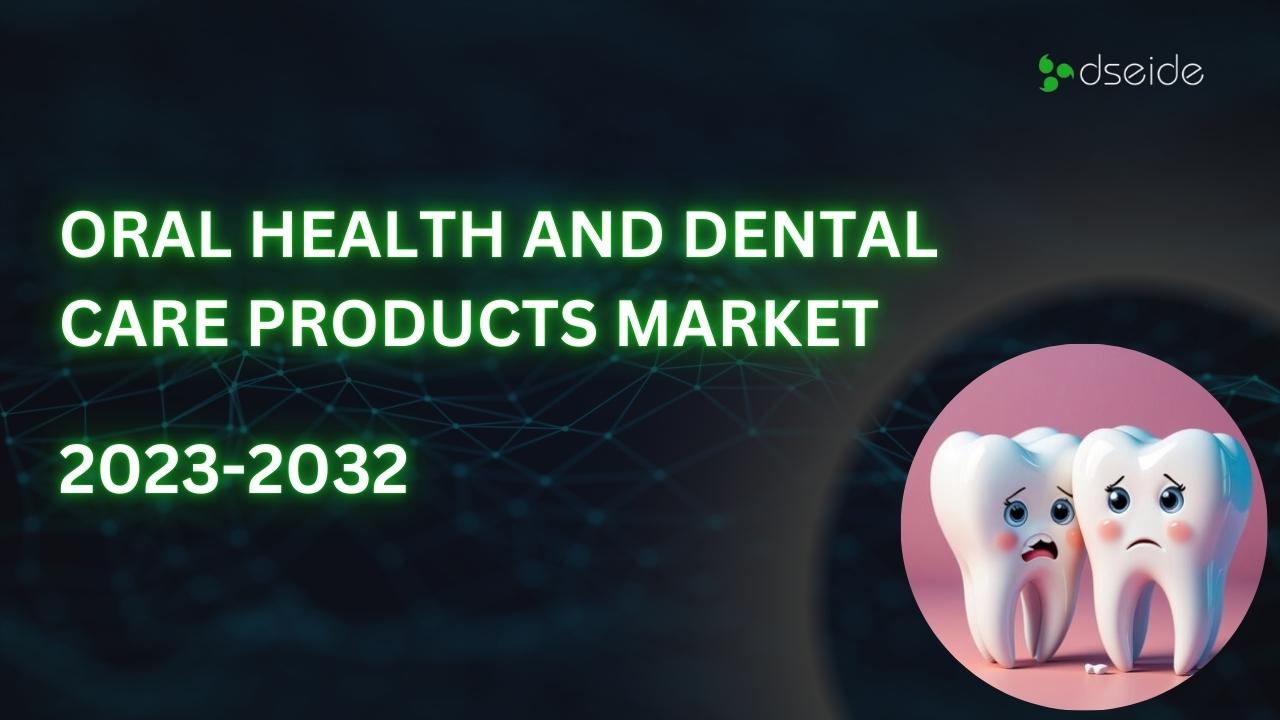Oral Health and Dental Care Products Market: Trends, Growth, and Future Outlook (2023-2032)"

The global market for oral health and dental care products is experiencing rapid growth, driven by increased awareness of dental hygiene and the rising demand for innovative oral care solutions. According to the latest report by MRA, the market was valued at USD 12.90 billion in 2022 and is projected to grow at a compound annual growth rate (CAGR) of 8.0%, reaching USD 23.85 billion by 2032. This growth is supported by several key trends and factors shaping the industry.
Key Trends Driving the Market
-
Rising Awareness of Oral Hygiene:
With growing consumer awareness regarding the importance of oral health, there has been a notable increase in the adoption of dental care products such as toothpaste, mouthwash, and dental floss. Consumers are becoming more proactive about their oral hygiene, leading to higher demand for advanced and effective products. -
Technological Advancements:
Innovation in dental care technology is another significant factor contributing to market growth. From smart toothbrushes with AI integration to teeth-whitening kits that use LED light technology, the market is evolving rapidly. Such technological advancements offer better results and enhance user experience, further boosting market demand. -
Growing Popularity of E-Commerce:
The proliferation of online shopping has allowed consumers easy access to a variety of oral care products. This trend is especially prevalent among younger demographics who prefer the convenience and accessibility of e-commerce platforms. Many companies are leveraging digital marketing strategies to reach a broader audience and boost sales. -
Increasing Focus on Natural and Organic Products:
Consumers are becoming more conscious of the ingredients in their dental care products, leading to a surge in demand for natural and organic options. Products free from artificial additives, preservatives, and chemicals are gaining popularity as people seek healthier alternatives.
Market Challenges
Despite the promising growth, the market faces several challenges:
-
High Competition: The oral health and dental care market is highly competitive, with numerous players vying for market share. Companies must continually innovate and differentiate their products to maintain a competitive edge.
-
Regulatory Hurdles: Compliance with stringent regulations and standards, particularly in different regions, can pose a significant challenge to market expansion. These regulations often vary, making it complex for companies to operate seamlessly across multiple geographies.
Market Segmentation
The report provides a detailed segmentation of the market by product type, distribution channel, end-user, and geography:
- Product Type: This includes toothbrushes, toothpaste, mouthwash, dental floss, teeth-whitening products, and others.
- Distribution Channel: The market is segmented into online and offline channels, including supermarkets, hypermarkets, pharmacies, and specialty stores.
- End-User: This segment covers individual consumers, dental clinics, and other commercial entities.
Regional Outlook
- North America: The market in North America is expected to maintain its dominance due to high consumer awareness and the presence of key industry players.
- Europe: The European market is projected to witness steady growth owing to rising dental care awareness and a growing aging population.
- Asia Pacific (APAC): APAC is anticipated to be the fastest-growing market due to increasing disposable incomes, a large customer base, and improving healthcare infrastructure.
- Latin America, Middle East, and Africa (LAMEA): These regions are also experiencing growth, primarily driven by urbanization and increasing investments in healthcare.
PESTLE Analysis
A PESTLE analysis provides insights into the political, economic, social, technological, legal, and environmental factors affecting the market:
- Political: Trade policies, taxation, and government regulations on health and safety can influence market dynamics.
- Economic: Factors such as interest rates, employment levels, and exchange rates can affect consumer spending on dental care products.
- Social: Demographic changes, cultural trends, and lifestyle changes impact consumer behavior and demand for oral care products.
- Technological: Innovations in dental care technology, including digital tools and devices, are creating new growth opportunities.
- Legal: Regulations related to consumer safety, employment, and international trade can impact market operations.
- Environmental: Growing concerns about sustainability and environmental impact are driving the demand for eco-friendly and sustainable oral care products.




